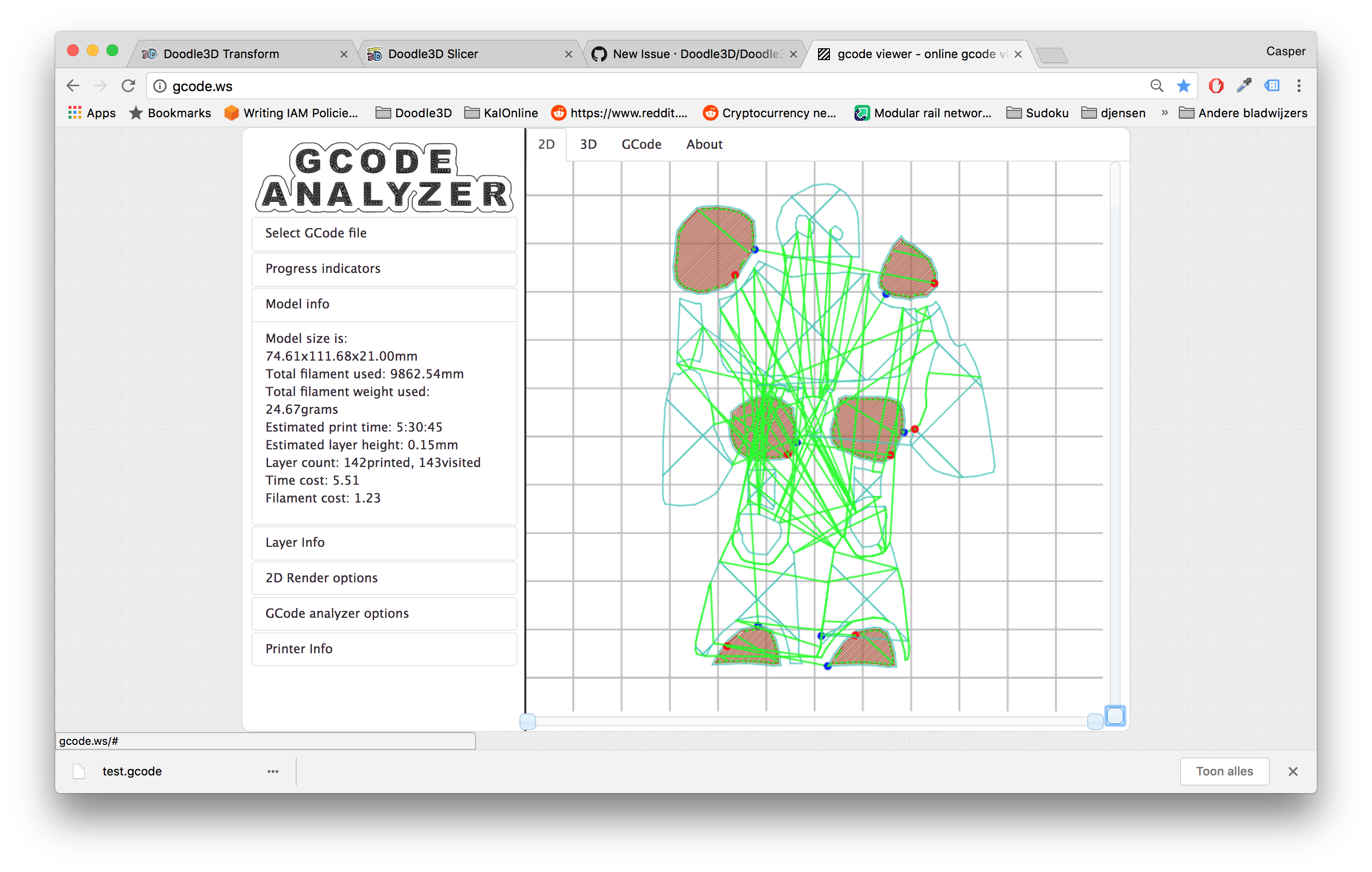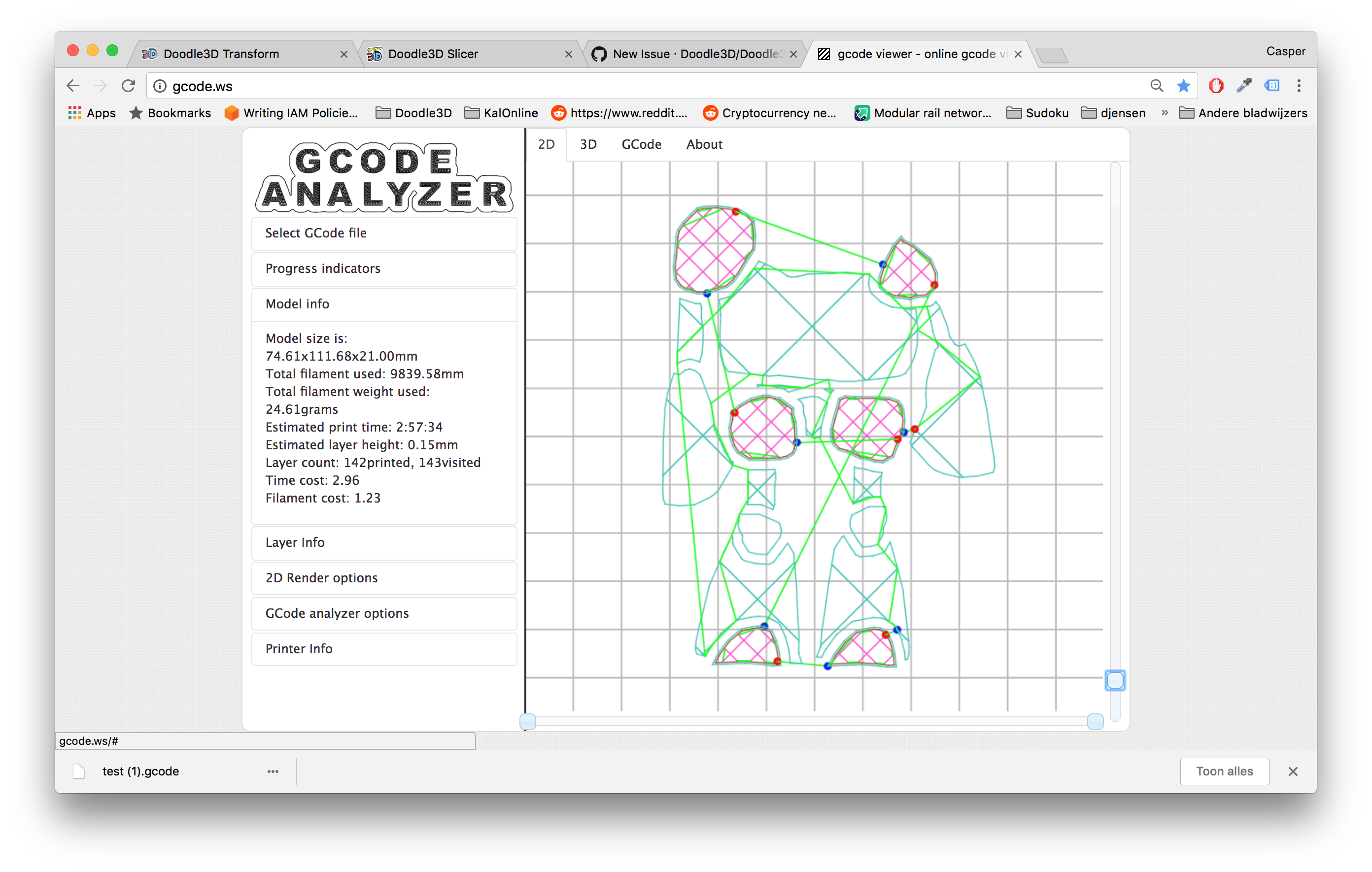-
Notifications
You must be signed in to change notification settings - Fork 3
New issue
Have a question about this project? # for a free GitHub account to open an issue and contact its maintainers and the community.
By clicking “#”, you agree to our terms of service and privacy statement. We’ll occasionally send you account related emails.
Already on GitHub? # to your account
Lot's of G0 moves in GCODE #45
Comments
|
Found a lib that can split concave polygons in to convex polygons (minimum convex decomposition) https://www.npmjs.com/package/poly-decomp (no support for holes) paper on the subject https://www.sciencedirect.com/science/article/pii/S0925772105001008 |
|
I've written an alternate aproach that can be seen here |

When combing is turned on there are some times a lot of unneeded G0 moves.
With combing turned ON

With combing turned OFF

The text was updated successfully, but these errors were encountered: